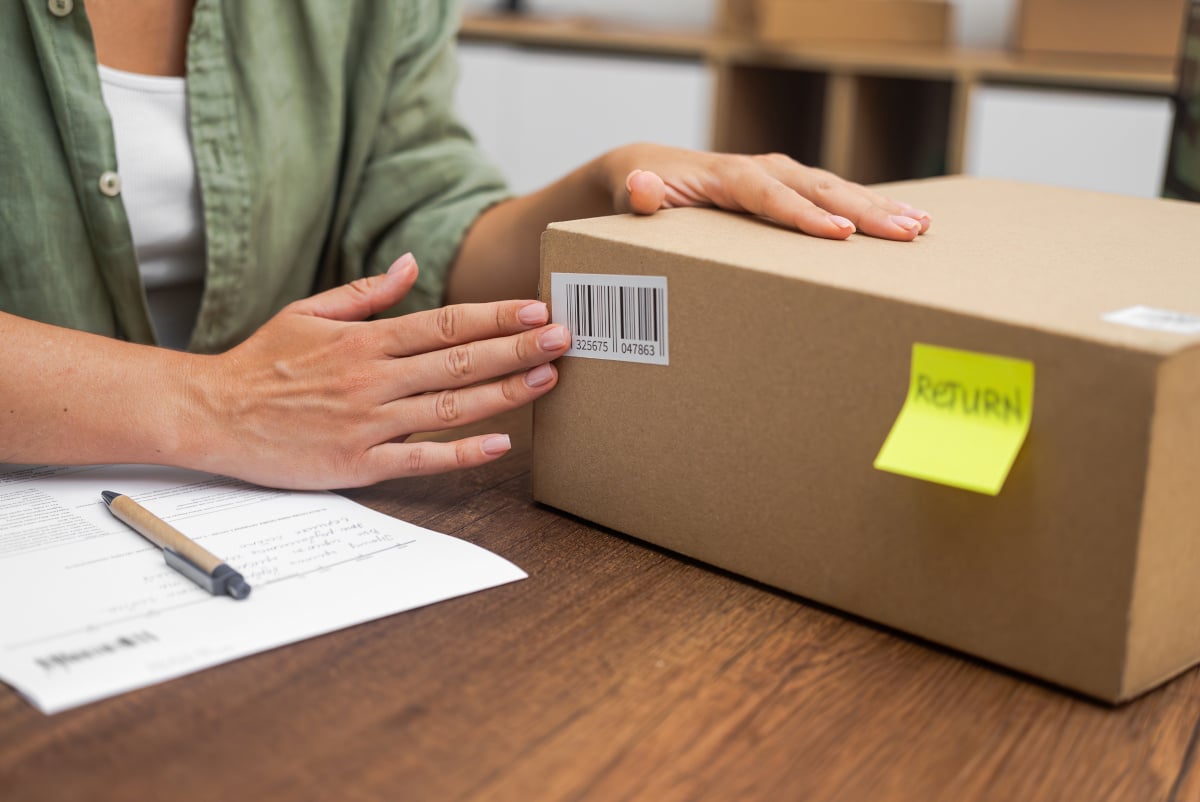When it comes to sustainability, retail has a big footprint. Between overproduction, returns, and last-mile deliveries, the environmental impact of getting goods from warehouse to wardrobe is staggering. One of the biggest challenges? Returns. Did you know that returning online items often doubles the environmental footprint of a single purchase? Returns alone contribute significantly to our waste crisis, not to mention the extra packaging, fuel, and logistics involved in bringing products back into the system.
As a retailer, you’re likely already feeling the pressure to adopt greener practices. Consumers want it, regulations increasingly require it, and it’s becoming clear that “business as usual” is no longer sustainable. While there are no quick fixes, one often-overlooked area can make a difference: your data. With the right tools, smarter data usage can reveal ways to reduce waste, streamline operations, and build a more sustainable future. Here’s where Returnalyze steps in.
The Impact of Returns on Retail Sustainability
First, let’s talk numbers. A recent Fast Company article highlights that 30% of online purchases are returned, compared to 8% of in-store buys. Every item that makes its way back to a warehouse adds to the environmental toll, whether through transportation emissions, extra packaging waste, or the energy needed for product reconditioning. In some cases, returned products don’t even make it back to the shelf – they’re discarded, resulting in even more waste.
 These figures aren’t just alarming for the planet; they’re costly. The National Retail Federation estimates that U.S. retailers alone saw nearly $400 billion in returns last year. From a purely operational perspective, a lot of capital is tied up in returns logistics. But imagine if we could chip away at this with data-driven decisions. That’s where we get excited.
These figures aren’t just alarming for the planet; they’re costly. The National Retail Federation estimates that U.S. retailers alone saw nearly $400 billion in returns last year. From a purely operational perspective, a lot of capital is tied up in returns logistics. But imagine if we could chip away at this with data-driven decisions. That’s where we get excited.
How Data Can Help Retailers Reduce Waste
Here are a few ways retailers leverage data for sustainability – and how Returnalyze can take it to the next level.
-
Predicting Demand Accurately
Overstock and markdowns are major contributors to retail waste. With data insights, retailers can accurately forecast demand, helping avoid overproduction in the first place. At Returnalyze, we take forecasting one step further by analyzing historical returns data to identify patterns. Maybe it’s seasonal variations, specific product issues, or sizing inconsistencies driving returns. With this knowledge, retailers can adjust their inventory strategies to keep items off the returns highway. -
Improving Product Descriptions and Sizing
Have you ever ordered something that looked amazing online, only to return it because it didn’t quite match expectations? Inaccurate product descriptions and inconsistent sizing lead to avoidable returns, clogging up the system with unnecessary shipments. By analyzing why customers return certain items, Returnalyze helps brands spot these red flags. Are shoes consistently running a half-size small? Is a jacket described as “waterproof” but comes back after every rainstorm? These insights enable retailers to refine their product listings and get closer to a “no-return” experience. -
Optimizing Reverse Logistics for Sustainability
Reverse logistics – the process of managing returns – is ripe for optimization. Data can streamline return routes, reduce emissions, and help prioritize items for restocking, repair, or recycling. Returnalyze dives into the logistics of returns, offering insights that go beyond the basics. For instance, we analyze which return patterns are geographically concentrated, allowing retailers to establish local return hubs. This approach reduces the carbon footprint of transporting goods back to centralized warehouses. -
Creating Circular Economy Models
Sustainability in retail isn’t just about reducing waste – it’s about reimagining waste as a resource. Many retailers are embracing the circular economy, where products are returned, refurbished, and resold instead of discarded. Returnalyze provides the data backbone for these initiatives. By identifying which products have the highest resale potential and analyzing the condition of returns, we make it easier for retailers to adopt circular models without a logistical nightmare.
How Returnalyze Drives Sustainable Retail
So, how exactly does Returnalyze help retailers like you reach sustainability goals? With an AI-driven approach, we take complex data and turn it into actionable insights that go beyond return percentages. Our platform dives deep into the reasons behind returns, the lifecycle of returned items, and the logistical footprint of reverse logistics. Understanding these intricacies empowers you to make smart decisions that balance profit and sustainability.
Whether it’s identifying areas for operational improvement or crafting strategies to prevent returns before they happen, we’re here to make data work harder for the planet. Sustainable retail isn’t about eliminating every return (let’s be honest, that’s a tall order), but by making informed choices, we can reduce waste, satisfy eco-conscious consumers, and ultimately save on the bottom line.
Keep data at the forefront as you consider ways to make your business more sustainable. Not only does it offer a roadmap to reducing waste, but it also gives you a competitive edge in an increasingly eco-focused marketplace. With Returnalyze, you’re not just processing returns – you’re transforming them into valuable insights that shape a greener, more efficient future for retail. So, are you ready to make a positive impact with your returns data? Let’s start reducing waste together, one data point at a time.
Ready to improve your post-purchase experience? Schedule a demo or contact our team today.


